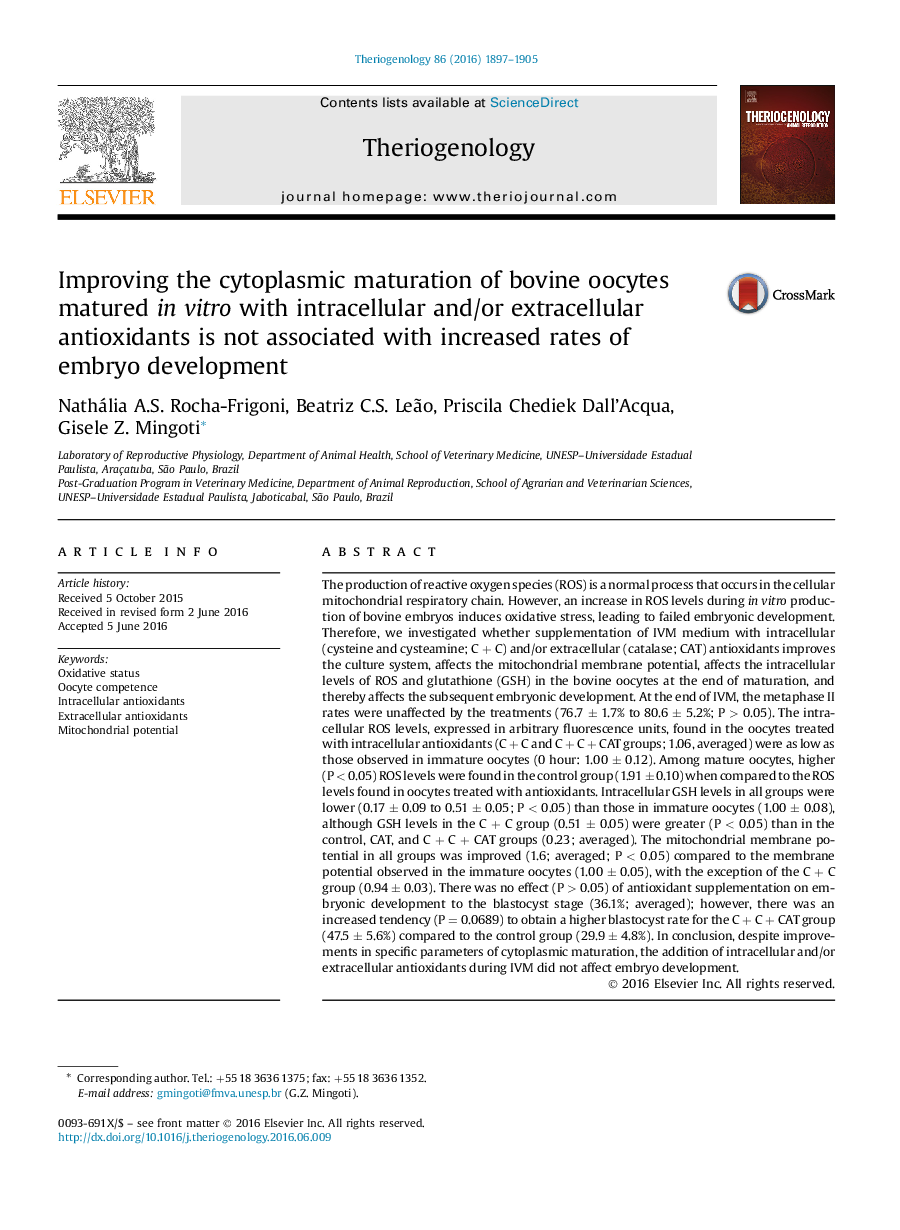| کد مقاله | کد نشریه | سال انتشار | مقاله انگلیسی | نسخه تمام متن |
|---|---|---|---|---|
| 5523218 | 1401367 | 2016 | 9 صفحه PDF | دانلود رایگان |

The production of reactive oxygen species (ROS) is a normal process that occurs in the cellular mitochondrial respiratory chain. However, an increase in ROS levels during in vitro production of bovine embryos induces oxidative stress, leading to failed embryonic development. Therefore, we investigated whether supplementation of IVM medium with intracellular (cysteine and cysteamine; C + C) and/or extracellular (catalase; CAT) antioxidants improves the culture system, affects the mitochondrial membrane potential, affects the intracellular levels of ROS and glutathione (GSH) in the bovine oocytes at the end of maturation, and thereby affects the subsequent embryonic development. At the end of IVM, the metaphase II rates were unaffected by the treatments (76.7 ± 1.7% to 80.6 ± 5.2%; P > 0.05). The intracellular ROS levels, expressed in arbitrary fluorescence units, found in the oocytes treated with intracellular antioxidants (C + C and C + C + CAT groups; 1.06, averaged) were as low as those observed in immature oocytes (0 hour: 1.00 ± 0.12). Among mature oocytes, higher (P < 0.05) ROS levels were found in the control group (1.91 ± 0.10) when compared to the ROS levels found in oocytes treated with antioxidants. Intracellular GSH levels in all groups were lower (0.17 ± 0.09 to 0.51 ± 0.05; P < 0.05) than those in immature oocytes (1.00 ± 0.08), although GSH levels in the C + C group (0.51 ± 0.05) were greater (P < 0.05) than in the control, CAT, and C + C + CAT groups (0.23; averaged). The mitochondrial membrane potential in all groups was improved (1.6; averaged; P < 0.05) compared to the membrane potential observed in the immature oocytes (1.00 ± 0.05), with the exception of the C + C group (0.94 ± 0.03). There was no effect (P > 0.05) of antioxidant supplementation on embryonic development to the blastocyst stage (36.1%; averaged); however, there was an increased tendency (P = 0.0689) to obtain a higher blastocyst rate for the C + C + CAT group (47.5 ± 5.6%) compared to the control group (29.9 ± 4.8%). In conclusion, despite improvements in specific parameters of cytoplasmic maturation, the addition of intracellular and/or extracellular antioxidants during IVM did not affect embryo development.
Journal: Theriogenology - Volume 86, Issue 8, November 2016, Pages 1897-1905